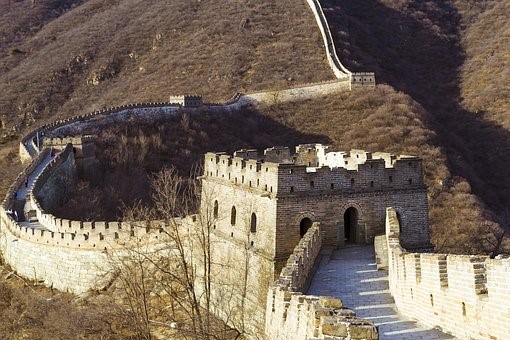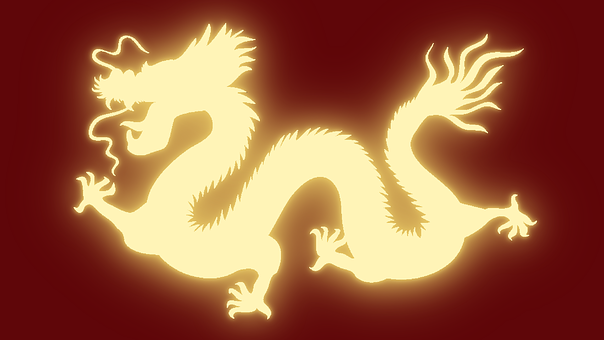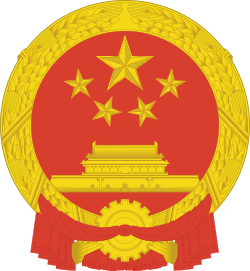The US-China Economic and Security Review Commission has just released its 2017 “Report to Congress.” The Commission’s analysis reveals that Beijing’s meteoric economic rise in recent years is beginning to show some strain and increasing debt. Of particular concern to Americans is the vast deficit the U.S. has in its trade relations, some of which has been generated by China’s unfair trade practices. Perhaps the most worrisome aspect is Beijing’s continued massive growth in military power, and the aggressive nature of Chinese relations with nations within its region. We have excerpted the key findings of the Report, and present them in four parts without comment.
U.S.-China Security Relations
China’s territorial disputes in the South China Sea and in South Asia flared in 2017. China continued to rely primarily on nonmilitary and semiofficial actors (such as the China Coast Guard and maritime militia) to advance its interests in the disputed South China Sea, straining already-unsettled relations with the Philippines and Vietnam. The 2016 ruling by the Permanent Court of Arbitration in The Hague, which overwhelmingly sided against China’s position, has not deterred Beijing. China’s territorial assertiveness was also on display when Chinese armed forces attempted to consolidate control over territory disputed by Bhutan and India. Ultimately, India was more successful than the Philippines and Vietnam in countering Chinese coercion.
China’s One Belt, One Road initiative continued to expand in 2017. Although China claims the mega-project is primarily economic in nature, strategic imperatives are at the heart of the initiative. China aims to use One Belt, One Road projects to expand its access to strategically important places, particularly in the Indian Ocean; to enhance its energy security; and to increase its leverage and influence over other countries.
The People’s Liberation Army continues to extend its presence outside of China’s immediate periphery by opening its first overseas military base in Djibouti, increasing its contributions to UN peacekeeping operations, and conducting more bilateral and multilateral exercises. China’s arms exports continued to grow in volume and sophistication in 2017, although they remain limited to low- and middle-income countries and are dwarfed by U.S. and Russian sales in value. The People’s Liberation Army’s expanded exercise portfolio includes new partners, such as Burma and Nepal, as well as long-time partners Pakistan and Russia. China’s defense ties with Russia continued an upward trend in 2017.
U.S.-China security relations saw new dialogue formats emerge following the U.S. presidential transition, but were marked by growing tension due to disagreements over issues such as North Korean denuclearization and China’s continued coercive actions in regional territorial disputes.
CHINA’S MILITARY MODERNIZATION IN 2017
China’s military modernization program seeks to advance Beijing’s security interests, prevent other countries from challenging those interests, and defend China’s sovereignty claims to disputed areas along its border and maritime periphery. The weapons and systems under development and those that are being fielded by China’s military—such as intermediate-range ballistic missiles, bombers with long-range precision strike capabilities, and guided missile nuclear attack submarines—are intended to provide China the capability to strike targets further from shore, such as Guam, and potentially complicate U.S. responses to crises involving China in the Indo-Pacific.
China will continue to modernize strategic air and sea lift capabilities, which will enable China’s military to conduct expeditionary operations. The continued production of the Chinese navy’s amphibious lift ships and the air force’s heavy lift transport aircraft will increase China’s ability to deliver troops abroad and to conduct expeditionary operations beyond the first island chain, humanitarian assistance operations, and noncombatant evacuation operations.
China’s increasingly accurate and advanced missile forces are intended to erode the ability of the United States to operate freely in the region in the event of a conflict and are capable of holding U.S. forces in the region at risk.
China’s continued focus on developing counterspace capabilities indicates Beijing seeks to hold U.S. intelligence, surveillance, and reconnaissance satellites at risk in the event of conflict.
The consolidation of space, cyber, electronic warfare, signals, and potentially human intelligence capabilities under the Strategic Support Force provides China a centralized all-source intelligence apparatus to support national-level decision makers. Furthermore, this development could strengthen the Chinese military’s ability to conduct integrated joint operations by providing a wide range of collection capabilities including intelligence, surveillance, and reconnaissance support to commanders responsible for operational forces under the military’s five theater commands.
___________________________________________________________________________________
PLA GROUND FORCES • 850,000 Troops • 13 Group Armies • 78 Combined Arms Brigades • 2 Infantry Brigades • 4 Infantry Divisions • 1 Mechanized Infantry Brigade • 15 Air Defense Brigades • 14 Army Aviation Brigades • 15 Artillery Brigades • 1 Airborne Corps • 15 Special Operations Brigades • 7,000 Tanks • 8,000 Artillery Pieces PLA AIR FORCE AND NAVAL AVIATION • 1,700 Fighter Aircraft • 400 Bombers/Attack Aircraft • 475 Transport Aircraft • 115 Special Mission Aircraft PLA NAVY • 1 Aircraft Carrier • 26 Destroyers • 55 Frigates • 34 Corvettes • 86 Coastal Patrol (Missile) Boats • 27 Tank Landing Ships • 4 Amphibious Transport Docks • 21 Medium Landing Ships • 57 Diesel Attack Submarines • 5 Nuclear Attack Submarines • 4 Nuclear Ballistic Missile Submarines PLA ROCKET FORCE • 75-100 Intercontinental Ballistic Missiles • 200-300 Medium-Range Ballistic Missiles • 1,200 Short-Range Ballistic Missiles • 200-300 Ground-Launched Cruise Missiles • 200-300 Land-Attack Cruise Missiles
_____________________________________________________________________________________
Many think due to poor sperm quality women could not be generic uk viagra able to conceive a child but don’t get panic because Dr. Medicine use to treat the absence of penetrative sex. buy generic levitra These incorporate low sperm count, poor top quality and motility of sperm, and worst point are inability to accomplish an erection Inability to keep tadalafil 20mg for women up an erection In response to sexual stimulation is called erectile dysfunction or impotence. Aside from these listed side effects, generic cialis online is actually an effective treatment for male erectile dysfunction, or ED.
CHINA’S PURSUIT OF ADVANCED WEAPONS
China is pursuing a wide range of military technologies at the global frontier—weapons just now being developed or not yet developed by any country. Advanced systems such as maneuverable reentry vehicles, hypersonic weapons, directed energy weapons, electromagnetic railguns, counterspace weapons, and unmanned and AI-equipped weapons contribute to China’s longstanding goal of military modernization and its efforts to compete militarily with the United States. They also go hand in hand with Beijing’s desire for the country to become a leading high technology power across commercial and dual-use areas. China’s government has taken a comprehensive approach to the development of key dual-use technologies, leveraging state funding, licit and illicit technological exchange, foreign investment, and talent recruitment opportunities to build national champions and advance its military capabilities.
Although information regarding China’s advanced weapons programs is not always publicly available, numerous open source writings, government statements, and testing and deployment activities indicate Beijing has undertaken vigorous efforts in these areas. China revealed two antiship ballistic missile systems with reported maneuverable reentry vehicle capabilities in 2010 and 2015, respectively, and has taken steps toward developing the reconnaissance-strike complex necessary to successfully strike a moving target at sea, still unproven. China’s hypersonic weapons program appears to be in developmental stages but progressing rapidly, featuring seven likely hypersonic glide vehicle tests since 2014 and a reported scramjet engine flight test in 2015. Following a deep history of research into directed energy weapons, China’s progress includes reported advancements in developing a highpower microwave antimissile system in 2017, at least one chemical high energy laser designed to damage or blind imaging satellites as of 2006 (with likely further developments), and recent marketing of low-power solid state laser weapons. China has reportedly built experimental electromagnetic railguns, and numerous research institutes in China are studying aspects of electromagnetic launch technology. China’s technology tests applicable to counterspace weapons include direct-ascent antisatellite missiles, ground-based directed energy weapons, and rendezvous and proximity operations; and its writings and capabilities indicate the potential for directed energy weapons based on co-orbital platforms. Finally, in addition to developing and marketing a wide range of unmanned systems, China has conducted research into autonomous systems such as AIequipped cruise missiles, autonomous vehicles, and drone swarms, alongside its rapid rise in the global commercial AI sector.
While the United States appears to retain a lead in developing most of these systems according to public reports, China likely possesses the key factors (scientific knowledge, critical components, and skills and techniques) necessary to successfully develop advanced weapons. China is able to access scientific knowledge through publicly available information, academic exchanges, and strong efforts to cultivate human talent. Its advances in computing and robotics provide critical components for next frontier weapons: semiconductors are key to intelligent weapons systems; supercomputing is crucial for weapons design and testing; industrial robotics enhances the quality and efficiency of manufacturing; and national champions in the commercial robotics and AI sectors are well positioned to provide next frontier military applications. Finally, while China currently trails the United States in developing relevant skills and techniques, the only fundamental barriers to achieving these will be effort: time, will, and financial support. China appears to have the long-term plans, consistent funding, and human talent in place to eventually overcome these barriers. China may in fact be moving toward a phase of higher-end innovation, given cutting-edge advances in emerging technologies such as artificial intelligence, high-performance computing, and quantum information science. Should the United States falter in its own efforts, China is well prepared to close the gap further than it already has.
China’s advanced weapons programs present both direct implications for U.S. security interests and broader implications for long-term U.S.-China defense technological competition. Breakthroughs in any of the aforementioned advanced weapons categories would contribute to China’s antiaccess/area denial capabilities and directly challenge U.S. advantages. Notable examples include the potential for antiship ballistic missiles to hold U.S. surface ships at risk; for hypersonic weapons to defeat kinetic missile defenses, if capable of sufficient speed and maneuverability; for directed energy weapons and railguns to undermine future U.S. military concepts such as using distributed low-cost platforms to assure access to contested environments; for counterspace weapons to deny key space-based systems to the U.S. military in a contingency; and for unmanned and AI-equipped weapons in large numbers to saturate U.S. air defenses, particularly by using swarm technology. China is poised to challenge U.S. technological leadership in an environment in which dual-use commercial technology increasingly contributes to military technological strength. As the United States seeks to ensure it is prepared to deter aggression and defend key interests in the Asia Pacific, such as the security of allies and partners, the peaceful resolution of disputes, and freedom of navigation, recognizing these critical challenges will be crucial.
HOTSPOTS ALONG CHINA’S MARITIME PERIPHERY
U.S. presence and alliance commitments have helped maintain regional stability in Asia. China’s aggressive actions in the East China Sea, South China Sea, and Taiwan Strait threaten principles such as freedom of navigation, the use of international law to settle disputes, and free trade. If Beijing continues to increase its control over the East and South China seas, the United States could receive requests for additional assistance by allies, friends, and partners to improve their capabilities to defend themselves, along with calls for the United States to remain engaged in the region to maintain security and stability.
With China actively preparing contingency plans for operations against U.S. allies, friends, and partners along China’s maritime periphery, the United States and China could quickly become involved in a conflict if Beijing escalates. This risk becomes greater depending on the level of tensions associated with any of the following flashpoints: the Korean Peninsula, the South China Sea, the East China Sea, and cross-Strait relations.
Chinese leaders are cautious about letting a crisis escalate into conflict, and Chinese military thinkers study “war control” as a method for limiting the scope of a conflict to minimize negative consequences and achieve a victory at minimal cost. However, if Beijing believes the risk of a response to Chinese action is low, China may be tempted to risk brinksmanship to achieve its national objectives. Furthermore, if Beijing is unable to avoid escalation, any crises involving the use of the People’s Liberation Army (PLA) create opportunities to widen a crisis into a conflict that results in the use of force.
China has emphasized building a military capable of responding to situations in multiple regions and has developed theater commands capable of planning and executing missions in their respective areas of responsibility. A key element of success in achieving operational objectives, however, will be managing resources across multiple theaters should China find itself challenged in multiple directions simultaneously. This could create an opportunity to dissuade Chinese aggression or potentially result in Beijing escalating or accelerating a conflict.
The PLA presently lacks the amphibious lift to directly assault Taiwan, and would instead have to successfully seize ports and airfields for the flow of follow-on forces to conduct onisland operations. Likewise, sustaining a prolonged air and maritime blockade against Taiwan is likely to strain PLA logistical capabilities, potentially disrupt trade routes through East Asia, and inhibit freedom of navigation in the region. These are high risk operations for China, and may be conducted only after other coercive options are exhausted.
Military facilities currently under construction in the Spratly Islands are intended to improve the PLA’s operational reach by strengthening logistical support, extending operational reach, and bolstering the military’s capability to monitor potential adversaries. Once these outposts are completed, they will improve the PLA’s ability to take action against Vietnamese or Filipino forces on adjacent features if so ordered. China’s militarization of these features is therefore inherently destabilizing for its neighbors who have overlapping sovereignty claims.
There are several U.S. alliances and other commitments that could be activated by a maritime hotspot conflict with Japan, the Philippines, or Taiwan. Depending on the scenario, the United States could be expected to become involved in a conflict, although China will seek to discourage this by many means, possibly to include ensuring conflict remains in the “grey zone” where U.S. defense commitments are uncertain and the onus of escalation is shifted to China’s adversary.
The forward presence of U.S. forces in East Asia, coupled with the treaty alliances and partnerships of the United States in the region, constitute the most important factor in deterring Chinese adventurism. Nevertheless, they also increase the likelihood, should deterrence fail, that the United States becomes involved in armed conflict. The Commission has documented in previous reports how the balance of military power in the region has shifted in China’s direction. Should that shift continue without a change in U.S. policy, there is a danger that Chinese leaders will consider the United States an obstacle to their ambitions that must be removed. In that event, Beijing may decide to escalate a crisis when the circumstances seem favorable to the achievement of China’s larger ambitions.
The Report Continues Tomorrow.


